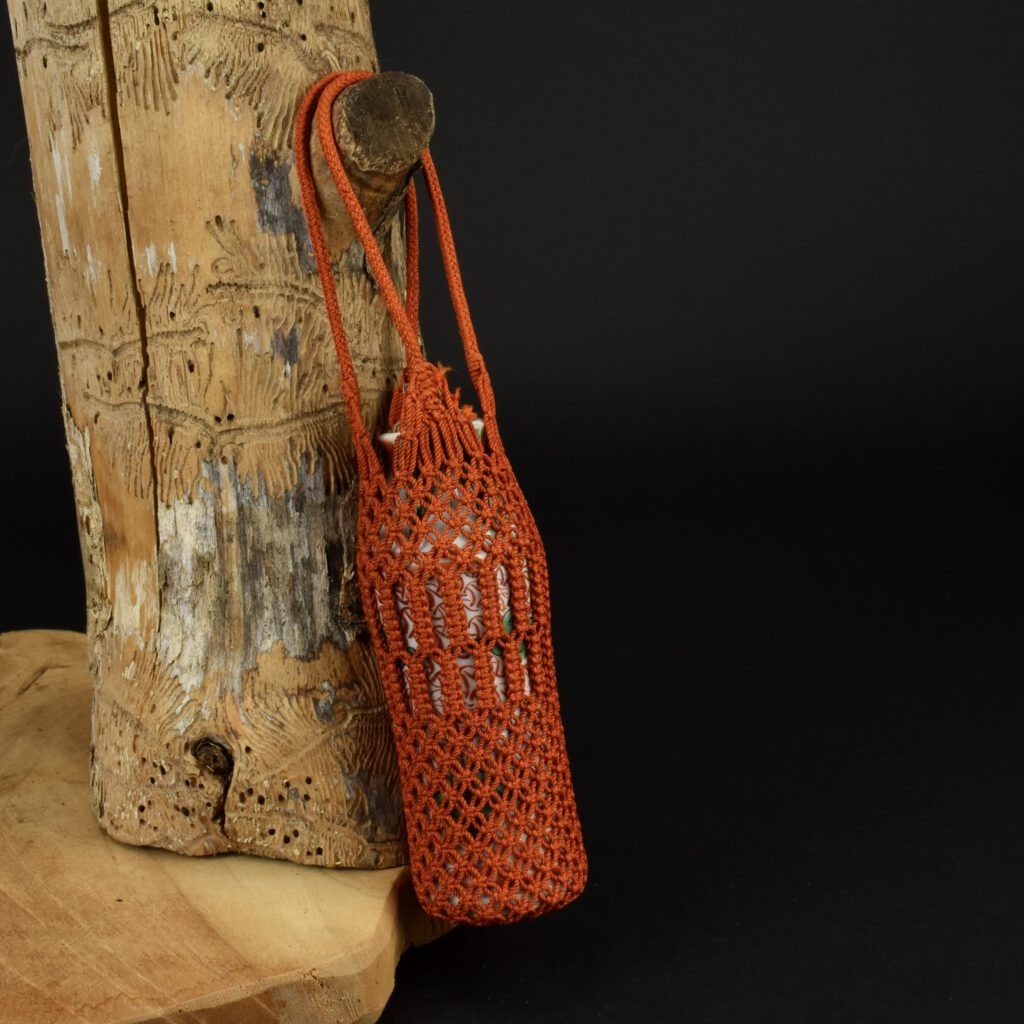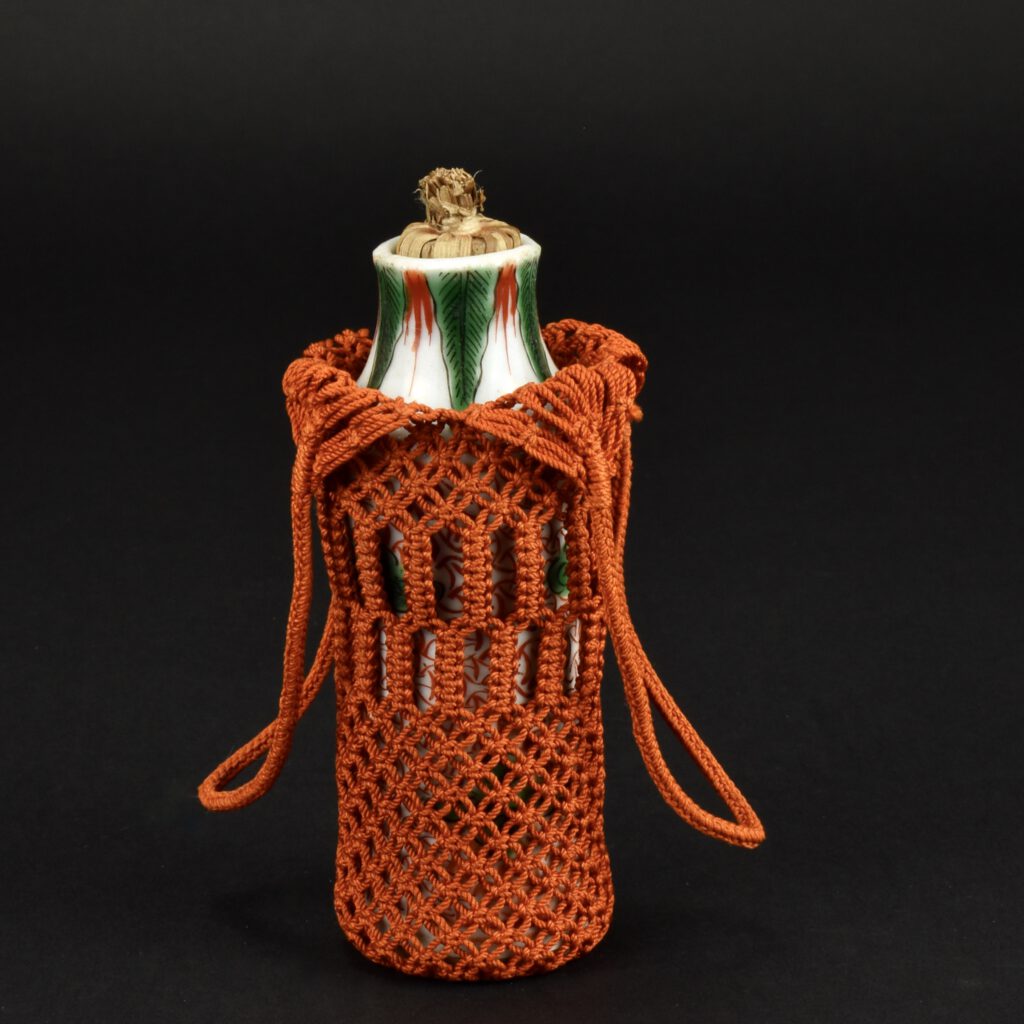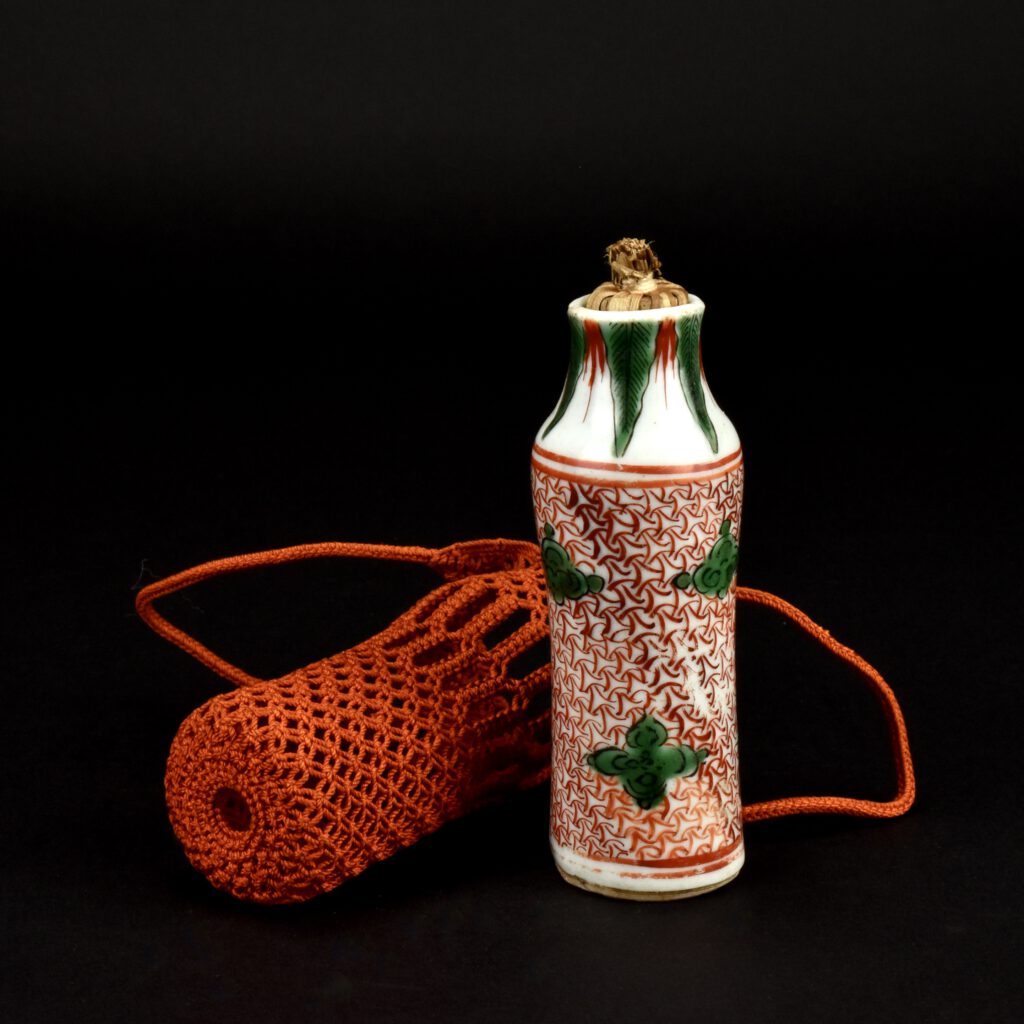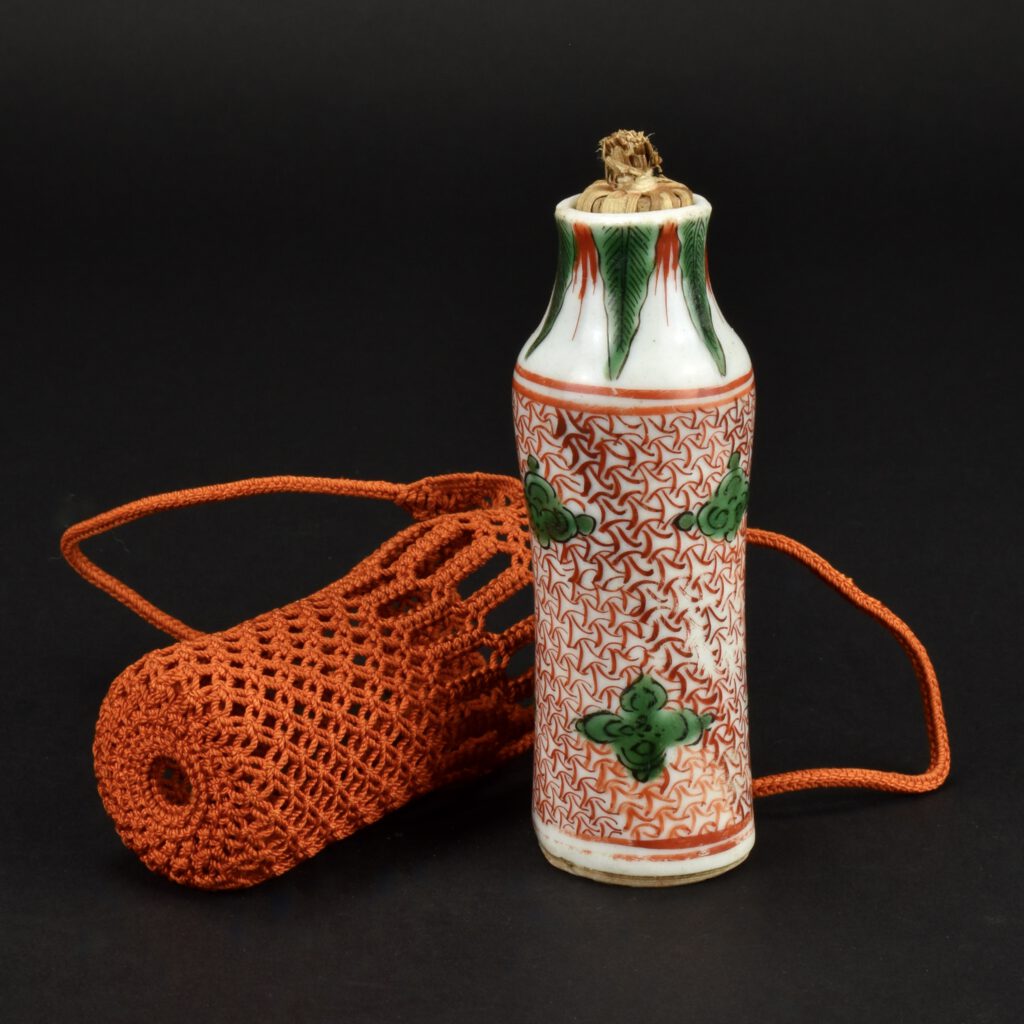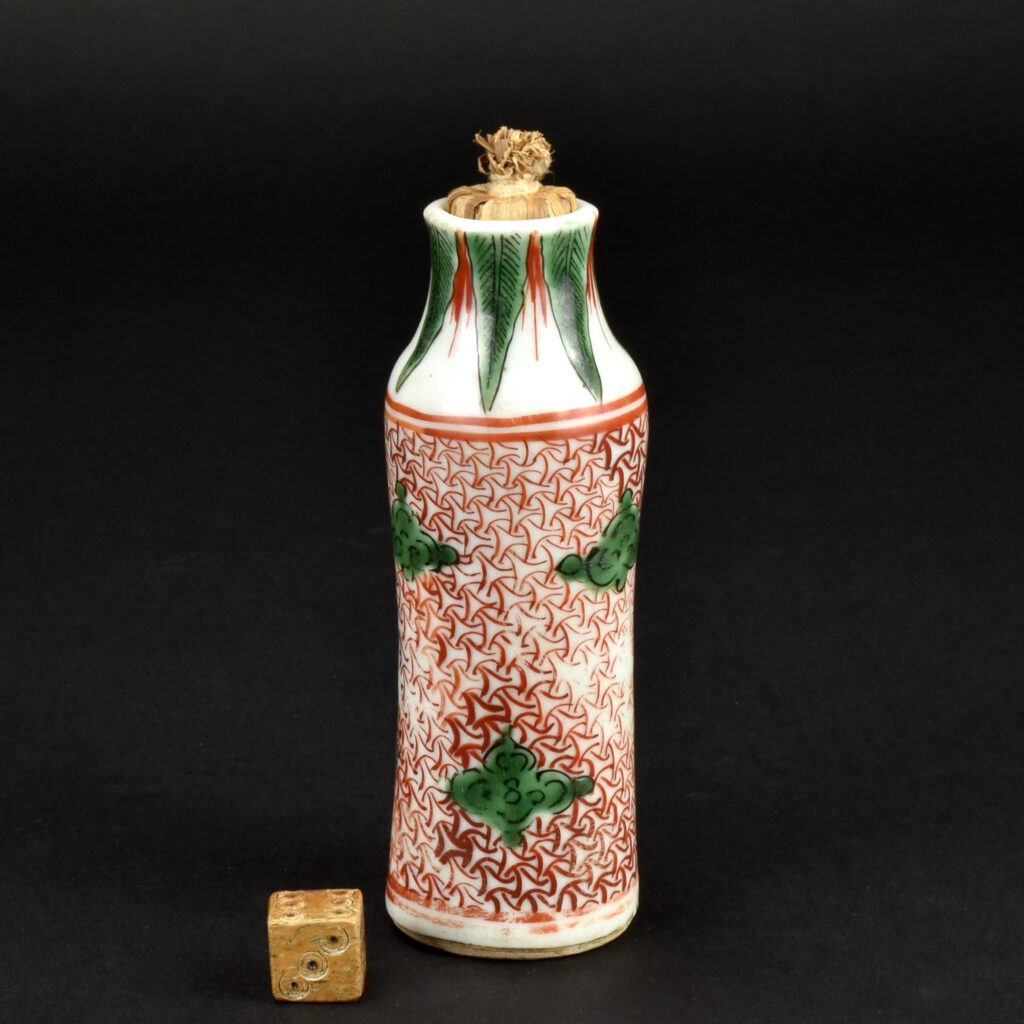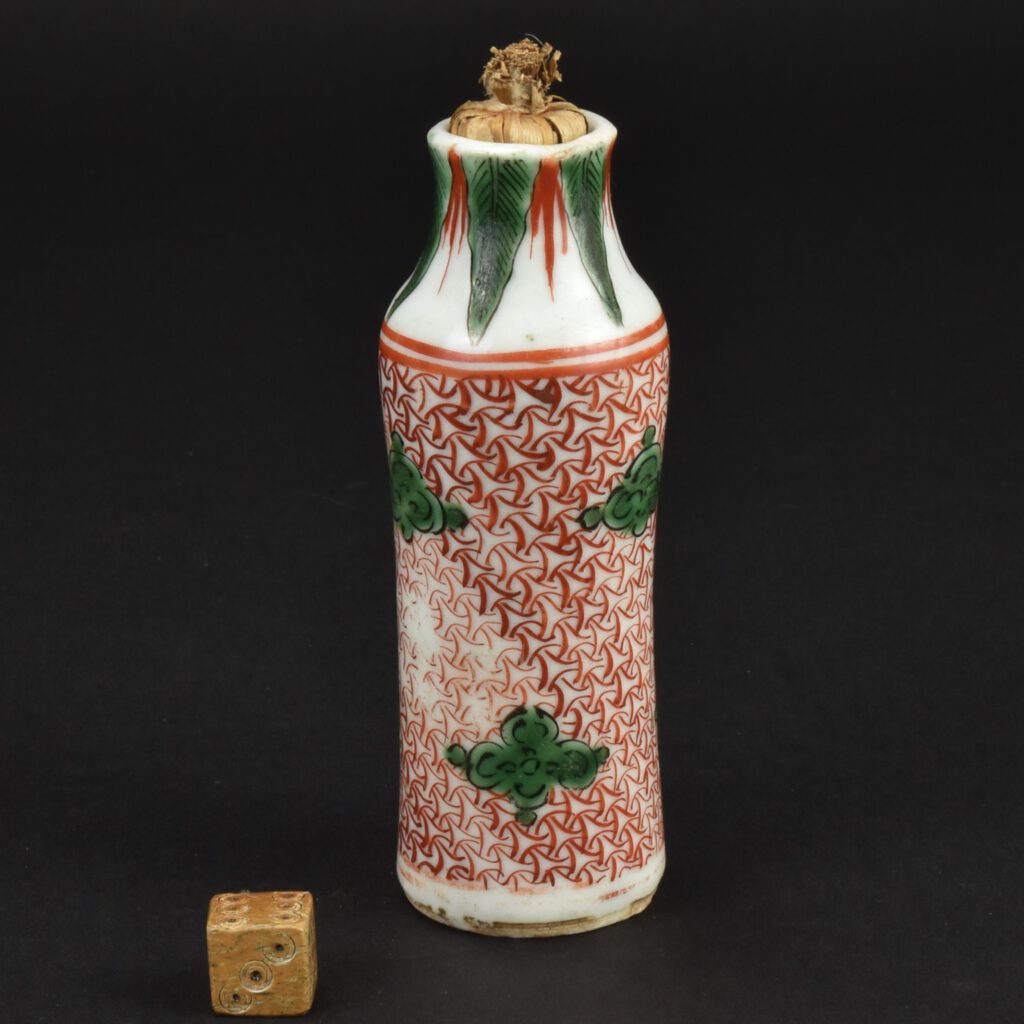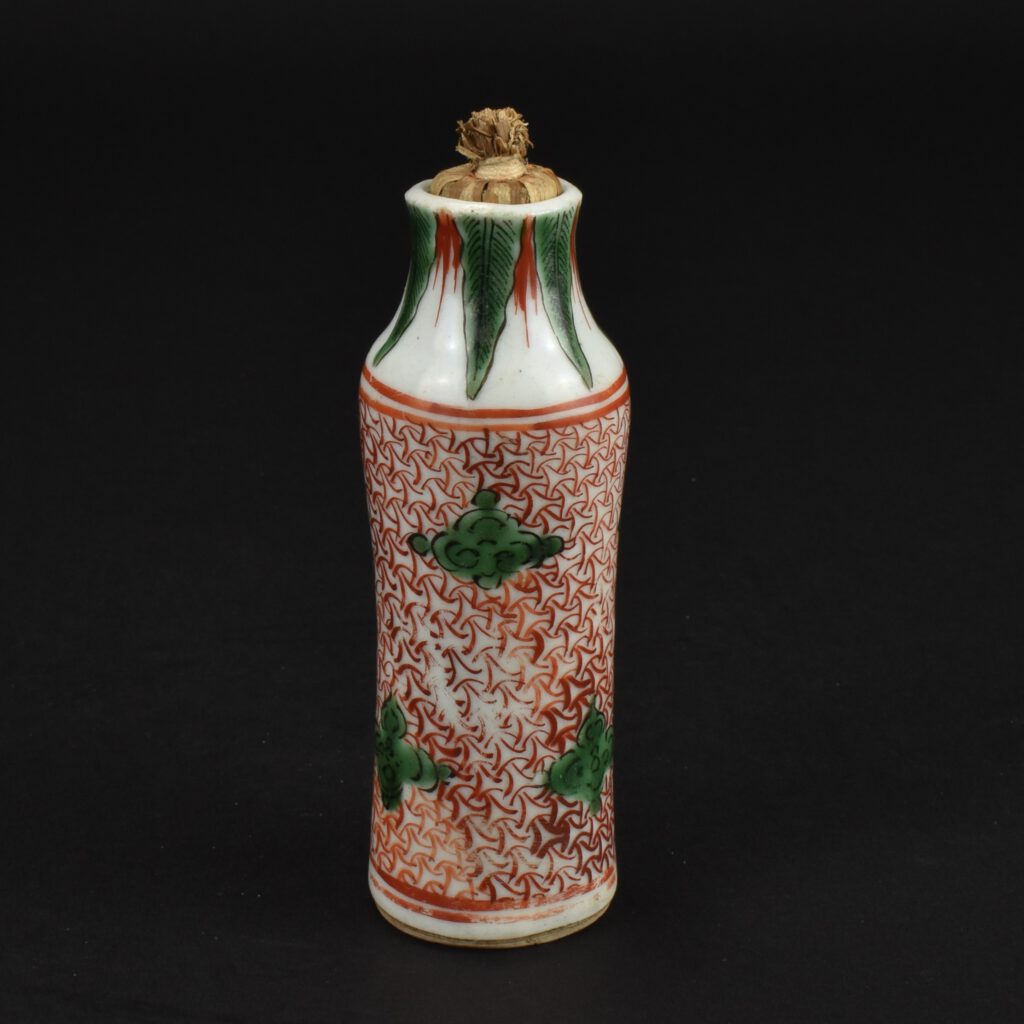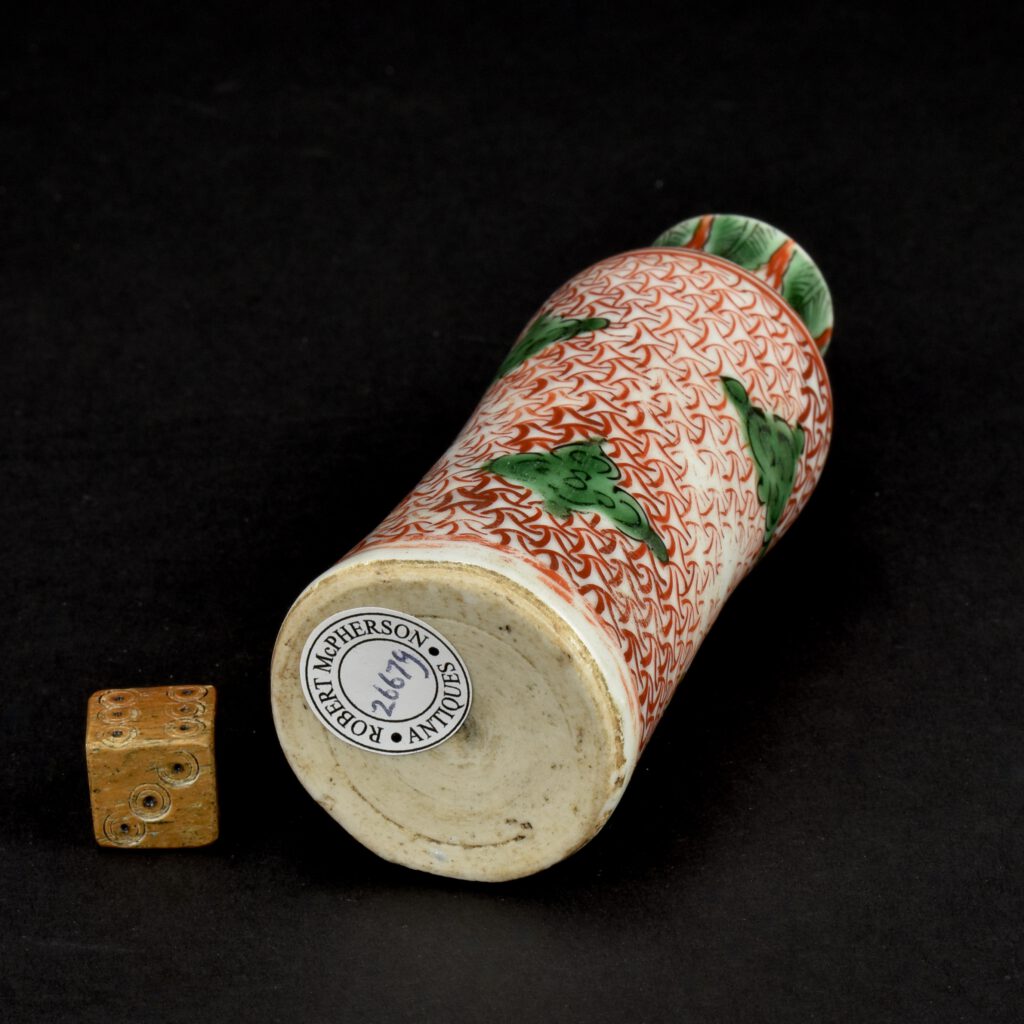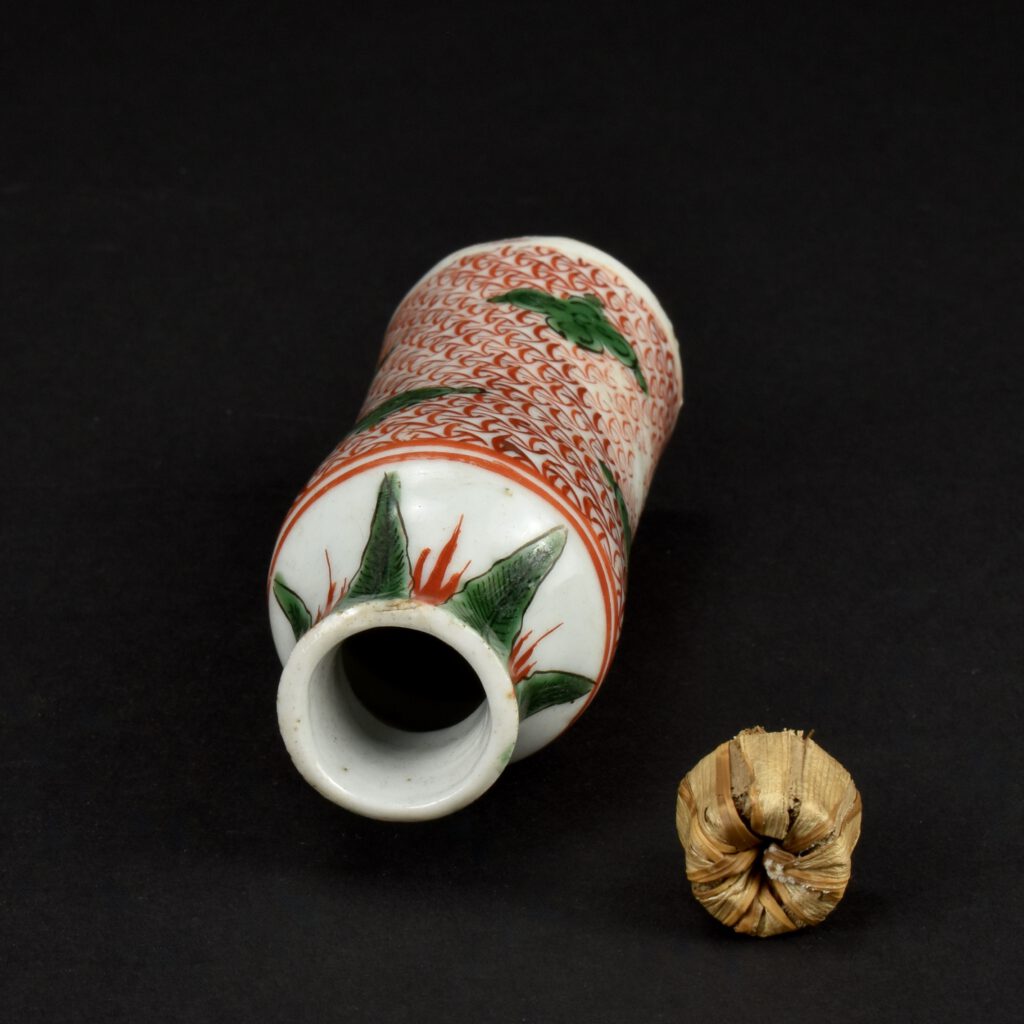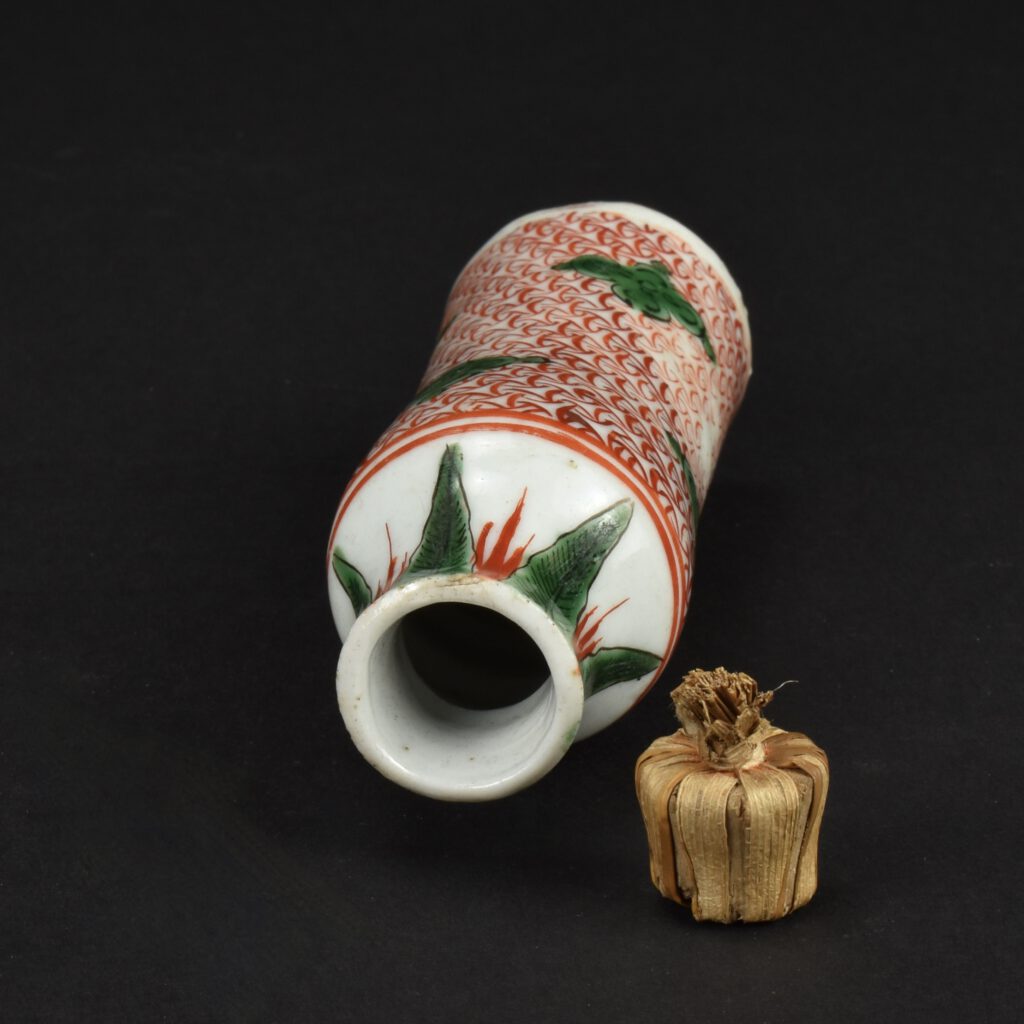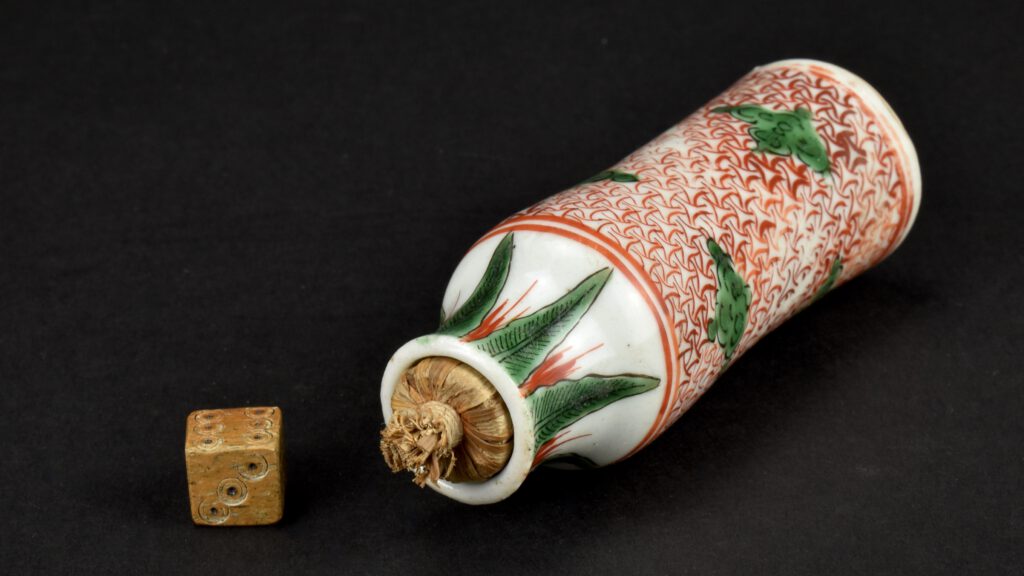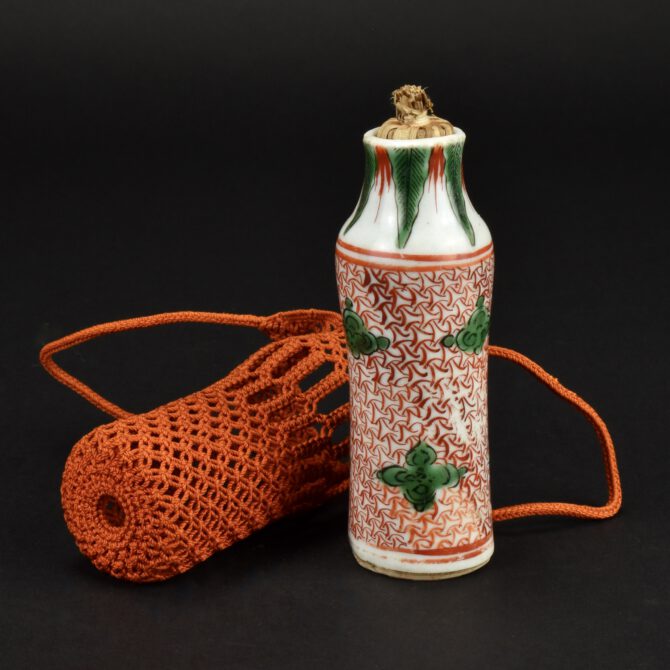
A Very Rare Shunzhi Porcelain Tea Container
A Ming Rare Porcelain Ko-akae Tea Container Made for the Japanese Market, Shunzhi Period 1644 – 1661. This small tea container was made rather later than most Chinese porcelain for the Japanese, the size is very small but related to the large Shunzhi vases of the period. The slightly waisted form that curves to a small top, also has similarities with large Shunzhi vases, even down to the stiff-leaf border. The use of a large area of red diaper pattern is also typical of this period. The green and black design might be a stylised flower. The red diaper pattern looks like fabric and rather nicely fits the modern Japanese carrying holder which has repeated ‘cash’ designs. The stopper is of tied reeds or grass, perhaps over a wooden core, the reeds are tied at the top. The flat base is unglazed.
See below for more photographs and references.
SOLD
- Condition
- A small chip to the out top rim.
- Size
- Height 10 cm (4 inches).
- Provenance
- N/A
- Stock number
- 26679
Information
Another Rare Transitional Tea Container c.1645
Robert McPherson Antiques - Sold Archive - Number 24925
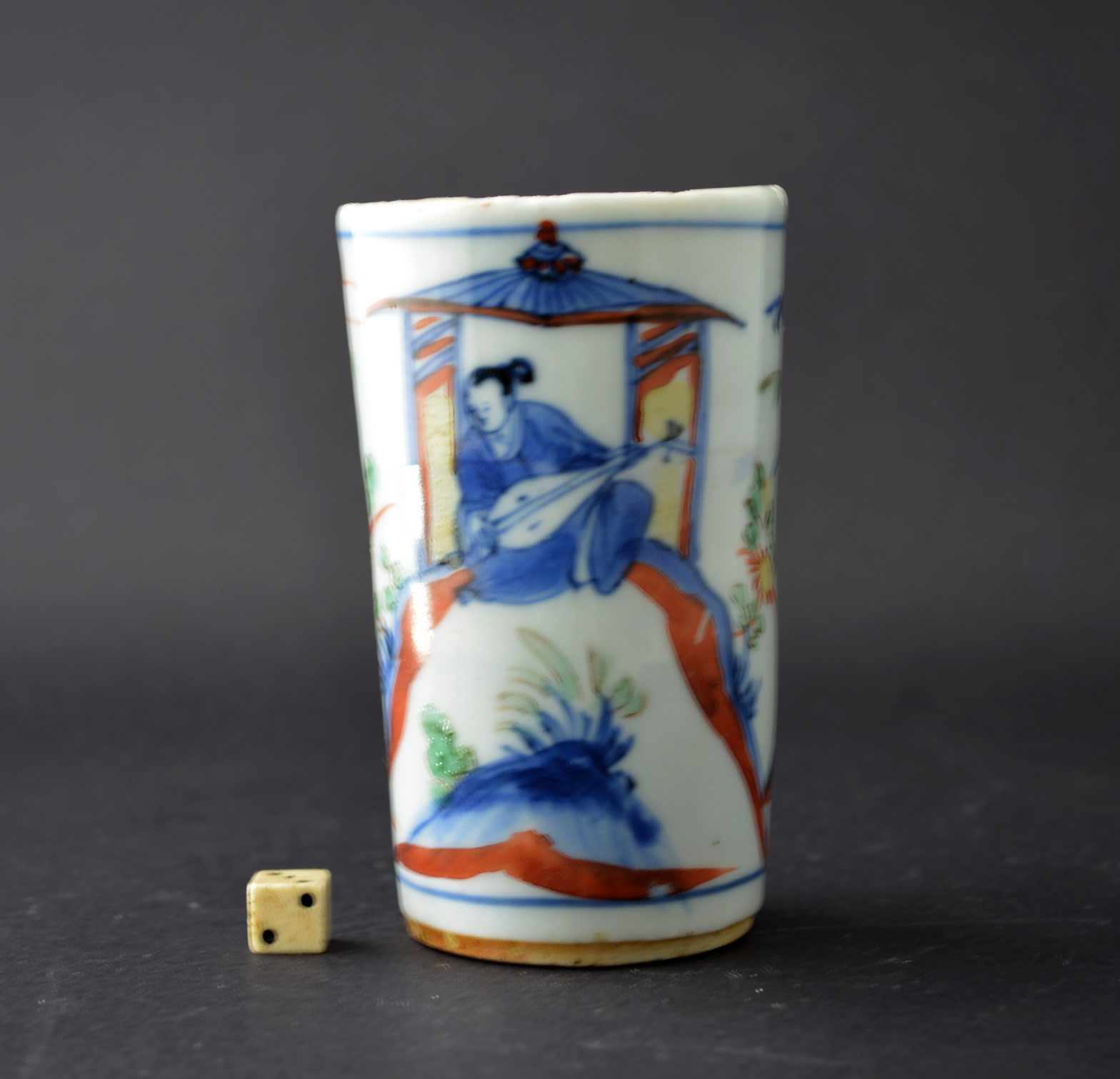
Ming Porcelain for Japan
During the late Ming Period the Chinese made a large among of porcelain for the Japanese market, it was made from the Wanli period (1573-1620) and ended in the Chongzhen period (1628-1644), the main period of production being the 1620`s and 1630`s. The porcelain objects produced were made especially for the Japanese market, both the shapes and the designs were tailored to Japanese taste, the production process too allowed for Japanese aesthetics to be included in the finished object. Its seams firing faults were added, repaired tears in the leather-hard body were too frequent to not, in some cases, be deliberate. These imperfections as well as the fritting Mushikui (insect-nibbled) rims and kiln grit on the footrims all added to the Japanese aesthetic. The shapes created were often expressly made for the Japanese tea ceremony meal, the Kaiseki, small dishes for serving food at the tea ceremony are the most commonly encountered form. Designs, presumably taken from Japanese drawings sent to China, are very varied, often using large amount of the white porcelain contrasting well with the asymmetry of the design.
The Transitional Period
The roots of this unsettled period starts during the later part of Wanli`s reign (1573-1620). At the begging of his reign China was doing very well, new crops from the Americas such as peanuts, maize and sweet potatoes increased food production, while simplified taxes helped the state run smoothly. But this was not due to Wanli`s enlightened reign, but to his Mother championing a man that was to become the Ming dynasties most able minister, Zhang Zhuzheng (1525—1583). Wanli became resentful of Zhuzheng`s control but upon his death became withdrawn from court life. Between 1589 to 1615 he didn`t appear at imperial audiences, leaving a power vacuum that was filled by squabbling ministers. Mongols from the North raided as Japan invaded Korea. Wanli re-opened the silver mines and imposed new taxes but the money was lost due to corruption, as well as being frittered away by the indulgent Emperor himself . The next emperor of Ming China, Tianqi (1621-1627), was bought up in this self indulgent disorganised environment, at the very young age 15 his short reign started. He didn`t stand a chance. Tianqi made the mistake of entrusting eunuch Wei Zhongxian (1568-1627) who Anna Paludan in her excellent book “Chronicle of the Chinese Emperors” (Thames and Hudson, 1998) describes as “a gangster of the first order”. Tianqi was deemed to have lost the Mandate of heaven by the Ming people. Tianqi`s younger brother, the last of the Ming Emperors, Chongzhen (1628-1644), was not able to save the situation. The systems of administration had broken down, corruption was rife and so when a sever famine broke out in 1628 nothing much could be done. Anna Paludan describes the tragic end to the great Ming Dynasty “The final drama was worthy of a Greek tragedy. The emperor called a last council in which `all were silent and many wept`, the imperial troops fled or surrendered, and the emperor, after helping his two sons escape in disguise, got drunk and rushed through the palace ordering the women to kill themselves. The empress and Tianqi`s widow committed suicide; the emperor hacked off the arm of one daughter before killing her sister and the concubines. At dawn he laid his dragon robe aside and dressed in purple and yellow, with one foot bare, climbed the hill behind the now silent palace and hanged himself on a locust tree”. The Great Wall of China, started 2,000 years ago was built to protect China from the Northern barbarian hoards, it was often tested and sometimes failed. The Jin people invaded China, ruling the North between 1115 and 1234, it was their descendants the Manchus, Jurchens from south east Manchuria that took full advantage of the problems of the Ming dynasty. In 1636 they adopted a Chinese dynastic name, the `Great Qing` (Qing meaning pure). The first of the Qing emperors was Shunzhi (1644-1661) but for most of his reign his uncle ran the state. War raged on during this period and it wasn`t until the second Qing emperor Kangxi (1662-1722) that true peace was achieved. Kangxi was a wise and educated man, he became a highly successful emperor bringing China a long period of wealth and stability.
Shunzhi 1644 - 1661
The Shunzhi emperor (lived 1638 to 1661) was the second emperor of the Manchu Qing dynasty, and the first Qing emperor to rule over China proper. He ascended to the throne aged five (six sui according to traditional Chinese count) in 1643 upon the death of his father, Hong Taiji, but actual power during the early part of his reign lay in the hands of the appointed regents, Princes Dorgon and Jirgalang. With the Qing pacification of the former Ming provinces almost complete, he died still a young man, although in circumstances that have lent themselves to rumour and speculation.
In the midst of much upheaval, the Manchus seized control of Beijing in June 1644, and in October of the same year the Shunzhi emperor`s uncle, the chief regent Prince, proclaimed the Qing dynasty to be the legitimate successor to the Ming dynasty. Therefore, although the Shunzhi emperor was not the founder of the Qing dynasty, he was the first Qing emperor of China. His mother was Empress Dowager Xiao Zhuang Wen who was an excellent politician during the period. The young emperor disliked his uncle, the chief regent Prince Dorgon, and after Dorgon`s death in 1650 the emperor stripped both him and Dorgon`s brother, Prince Dodo, of their titles, although he was only 12 years old at the time.
During his short reign, the Shunzhi emperor encouraged the Han Chinese to participate in government activities. He was a scholar and employed Han Chinese to teach his children. The emperor married his mother`s niece, but demoted the empress several years later. Four months after his favourite concubine passed away, he died of smallpox. Before he passed away, he appointed four regents to help his son, Hiowan Yei. They were Oboi, Sonin, Suksaha and Ebilun. It was believed that the young emperor did not pass away but left the palace to become a monk.
